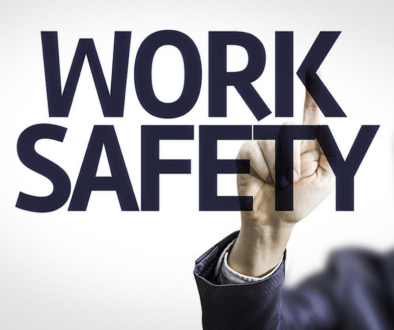420CPA California HR Update May 2023

Happy May!
Happy May! In this issue, we are highlighting federal updates for your workplace and minimum wage updates for California employers.

FLSA Update for all US Employers!
The PUMP for Nursing Mothers Act
The FLSA, or Fair Labor Standards Act, provides protections and rights to most nursing parents in the workplace, including reasonable breaks from work to express breast milk, each time they have to pump, for up to one year after their child’s birth.
President Biden signed the “Providing Urgent Maternal Protections for Nursing Mothers Act” (or PUMP Act), into law on December 29, 2022, affirming these rights, and stating employers may not deny covered employees their necessary pump breaks. In order for breaks to be compliant under the PUMP Act, employees need to be completely relieved from their work or the break must be paid. If the company’s practice is to offer paid breaks, employees using these breaks to pump must be paid in the same fashion that their coworkers are paid for their breaks.
Remote or “teleworking” individuals are entitled to the same pump break provisions of the FLSA as other employees, so long as they work for a covered employer. This means remote employees have the right to be off camera or video (including webcams, security cameras, and the like) while expressing breast milk in accordance with this law.
For those working from an office, coworking location, or the like, the pumping facilities must meet the following criteria:
- Area is NOT a bathroom
- Area is protected from view and secured from entry or intrusion by others (ex.: interior lock)
- Area is reserved for nursing employee use, or is available as such when needed for this purpose (even if temporary)
- Area is functional for use by nursing parents
Employers must note that the location of the designated pumping area, pump set-up, sanitation, and storage, the nursing parent’s needs, the nursing child’s needs, and other factors will likely affect the frequency and duration of the nursing employee’s pump breaks.
Discrimination, termination of employment, and other retaliatory actions in response to an employee filing a complaint (whether written or oral, participating in proceedings, testifying, serving on an industry committee, etc., relative to this law, are strictly prohibited under the FLSA. This includes complaints made to the Wage and Hour Division and likely includes complaints made directly to the employer themselves.
This legislation applies to almost all employees of FLSA-covered employers, but may exclude specific airline employees, railroad workers, and those who work on motorcoach carriers. These employees may have similar or more generous break entitlements under State or local laws. For employers of 50 or fewer employees,
Employers with fewer than 50 employees are not required to meet the FLSA break time and facility specifications, if doing so would cause the employer undue hardship, as determined by factors like financial impact, logistical difficulty, company and facility size, etc.
Companies who violate their employees’ rights to time and private space to express breast milk under this law are liable for remedies under the FLSA, including: reinstatement, repayment of wages, liquid and compensatory damages and more, beginning April 28, 2023, whether or not the employee(s) were retaliated against.

NLRB Legal Decision For All US Employers:
Confidentiality, Non-Disparagement Agreements, and More
In a recent overturning of a previous decision, the National Labor Relations Board (NLRB) determined that, under the National Labor Relations Act (NLRA), broad non-disparagement and confidentiality clauses in separation (or severance) agreements are not lawful unless these provisions are very specific and narrow in scope, respecting the rights afforded to employees under the NLRA, even if the employee is offered a severance agreement containing such language, but does not sign it.
The decision (McLaren Macomb, 372 NLRB No. 58 (2023)), affirms that the circumstances in which an employee or employees were asked to sign such documents is not relevant, but rather than the simple act of asking for acceptance of these terms and/or exchange of benefits for foregoing employee rights under the NLRA, is a violation of the law. The decision notes these unlawful practices can impact employees accusing employers of unfair labor practices or participating in related investigations.
Jennifer Abruzzo, the NLRB’s General Counsel, also affirmed other details, for example:
- This decision is applied retroactively, subject to a 6-month statute of limitations
- Supervisors may be protected under this law, if they are presented with an unlawful agreement restricting their rights in this manner, or are retaliated against for refusing to enforce an unlawful agreement
- Only unlawful provisions of severance agreements, handbooks and the like may be voided by the NLRB
- Employee rights may not be waived under these agreements by themselves, or their union reps
- It may be permissible for confidentiality agreements to address non-disclosure of the agreements financial terms and to restrict the release of trade secrets
- It is required that non-disparagement agreements relate only to defamatory and “maliciously false” statements, but nothing more.
Employees of most private employers are entitled to rights under the NLRA’s Section 7, even if the workers are not unionized. This includes the right to discuss pay, working hours and conditions, the employees’ opinions of their employer and more, among the employees themselves, with union organizers, with state, local, or federal officials, etc. Employers may be in violation with this law if their internal policies and procedures (Handbooks, etc.) restrict these rights. Additionally, Jennifer Abruzzo indicated that the NLRB may next look at the problems with non-compete, non-solicitation, no-poaching, and release of liability clauses, to name a few.
It is recommended that employers revisit any documents of this nature that are currently in their library or that are in force with current or former employees.
Employers may consider the following when it comes to their confidentiality, non-disparagement agreements and the like:
- Narrowly tailoring these provisions to comply with the recent legal decision, including focusing on defamatory statements and discussions of the financial details of the company or agreements
- Notifying any affected employees that they will not enforce these particular provisions
An EEOC Lawsuit:
Remote Work as a Reasonable Accommodation
Total Systems Services, LLC. (TSYS), a Georgia-based global payment processing company that refused remote work to an employee who was at increased risk of COVID-19 complications is now engaged in a lawsuit filed by the U.S. Equal Employment Opportunity Commission (EEOC).
The EEOC’s suit alleges that the denial of remote work as a “reasonable accommodation” unlawfully infringed on the employee’s rights under the Americans with Disabilities Act (ADA). The company is also accused of retaliating against the same employee, who suffers from diabetes and hypertension, for taking a medical leave of absence to reduce their exposure to, and potential complications from, COVID-19.
In 2020, a supervisor with TSYS told employees, including a customer service rep, that remote work was an option due to COVID-19-related concerns, provided certain criteria were met by the employees. When a coworker tested positive, the CS Rep, who had complicating health issues, self-quarantined for 2 weeks under the direction of a physician and was approved for short-term disability during this time, in which she also requested remote work as an accommodation. Despite a medical certification affirming the need for remote work, the request for such was denied by TSYS. Rather, the employee was granted 2 months of leave under the Family Medical Leave Act (FMLA).
A subsequent request for remote work went unaddressed, and after returning to in-office work following approved leave, the employee allegedly reached out multiple times to different internal parties to ascertain the status of her remote work request, while most of her coworkers, according to the EEOC’s complaint, continued to work remotely.
To exacerbate the employee’s concerns of contracting COVID, the employees who were onsite were not following recommended and required disease control protocols, like social distancing and masking.
With this lawsuit, the EEOC intends to affirm that they are watching employers very closely when it comes to denying telework as a reasonable accommodation under the ADA, notably with regard to COVID-19. Ultimately the employee never received the requested accommodation and resigned from their role less than one month after returning form leave, specifically citing the fear of contracting COVID-19 as the reason for their resignation.
With COVID-19 emergency legislation being discontinued at the local, state and federal levels, employers are reminded that requests for remote work as an accommodation still need to be met with the interactive process required by the ADA, and employers must work collaboratively with their employees to determine what accommodation is reasonable for the company and helpful for the employee.
Relatedly, employees may not always be granted their preferred accommodation. Remote work in particular is not accessible or appropriate in all cases. Additionally, the Company may be required to accommodate a employee who, in this case, is at a heightened risk for COVID, but not an employee whose family member is, so long as the employer is not engaging in association discrimination.

UPDATES FOR CA EMPLOYERS
Important Update to Minimum Wage in California Cities.
Businesses in the following localities must adjust to the increases as they go into effect on July 1, 2023:
California New Minimum Wage Increases:
- Fremont: $16.80
- Los Angeles (city): $16.78
- Los Angeles (county – unincorporated areas): $16.90
- Malibu: $16.90
- Pasadena: $16.93
- San Francisco: $18.07
- West Hollywood: $19.08
If you are an employer in an affected area, please ensure that your business’s minimum wage is updated.

COVID-19 Updates from CA Dep. Of Public Health
The California Department of Public Health (“CDPH”) announced updates to several public health orders related to “vaccination, masking, isolation, and quarantine, aligning the CDPH with CDC guidance. The updates below, effective 3/13/2023, affect CA residents, particularly those in the healthcare industry.
- Those who have tested positive for COVID-19 should isolate for 5 days (shortened), but may leave isolation after 5 days, providing their health and symptoms are improving and they have gone without a fever for 24 hours.
- Ending isolation is no longer contingent on a negative COVID test, but in order to be mask-free sooner than 10 days, individuals leaving isolation must test negative twice in a row, with at least one day in between tests.
- “Infectious period” is now defined as 2 days before the confirmed case showed symptoms until Days 5–10 after symptoms began AND 24 hours fever-free without fever-reducing medications and noted improvement in symptoms.
- For confirmed asymptomatic cases, the definition of “infectious period” is now 2 days before the positive test date through 5 days after the test date of the individual’s first positive COVID-19 test result, consistent with the recommended isolation period.
- The CDPH maintains its position that everyone should wear a well-fitting mask with good filtration (like N95 masks) when in the company of other people if you have a cough, runny nose, or sore throat, or other respiratory concerns AND recommends masking on public transportation and in airports, train stations, etc.
Employees in health care and emergency medical services, as well as skilled nursing facility residents, are not affected by these changes and should consult the guidance specific to their industry. Other Cal/OSHA regulations and standards may apply.
The CDPH press release can be accessed here. A full copy of the CDPH order is available by clicking here.

CDC Calculator for Quarantine for non-California Employers
COVID, COVID, COVID. We are all sick of hearing about it, but as it seems more and more likely that it is here to stay, we would like to turn your attention to a new tool released by the Centers for Disease Control. A new quarantine and isolation calculator has been released by the CDC to help determine when to stay home, how long to isolate, quarantine, and what other steps to take to prevent COVID-19. Although this does not meet CalOSHA requirements, it is great for employers in other states! The tool can be accessed using the link HERE!




